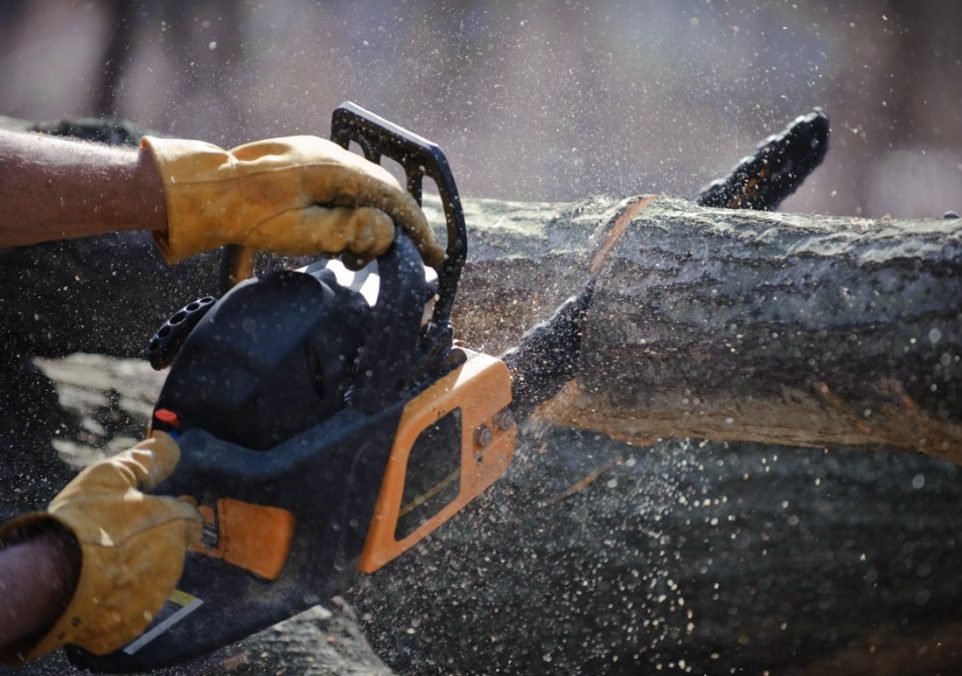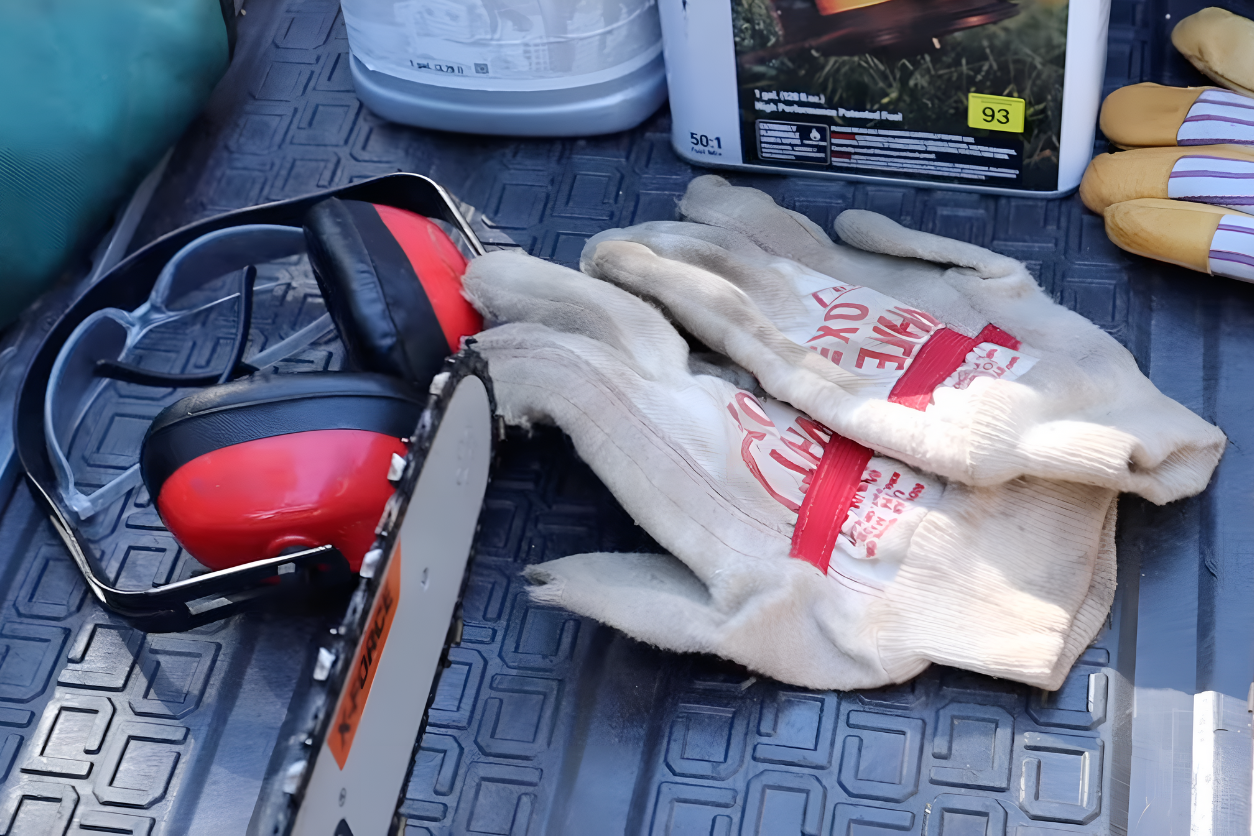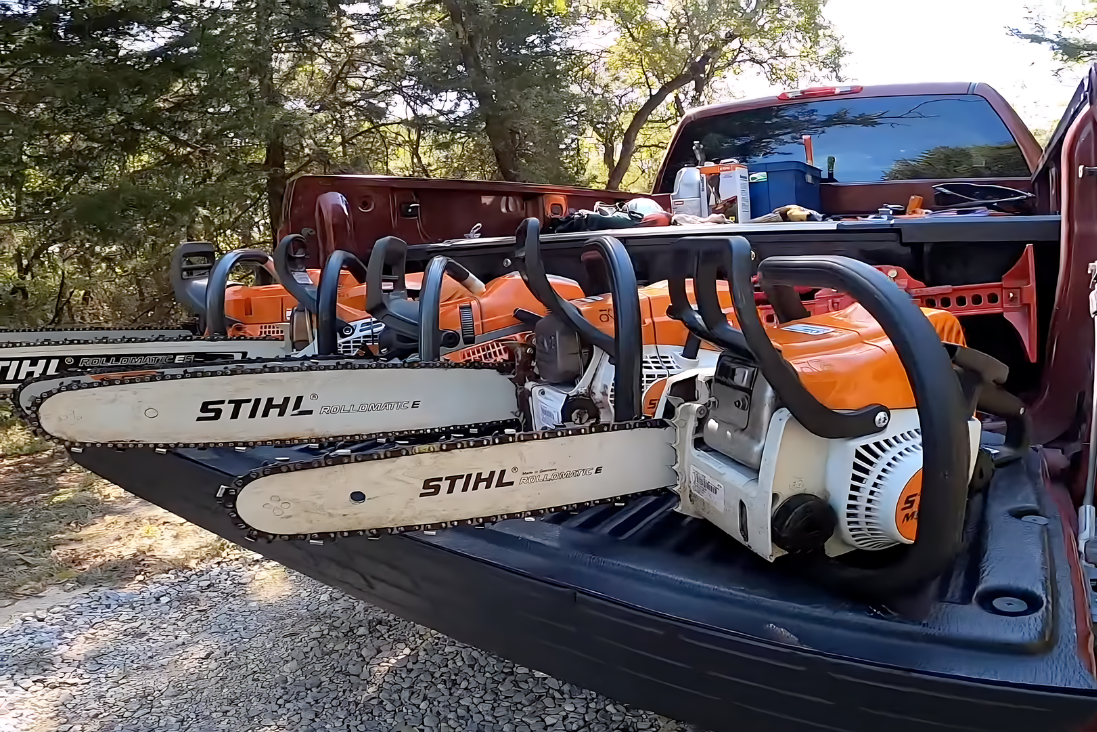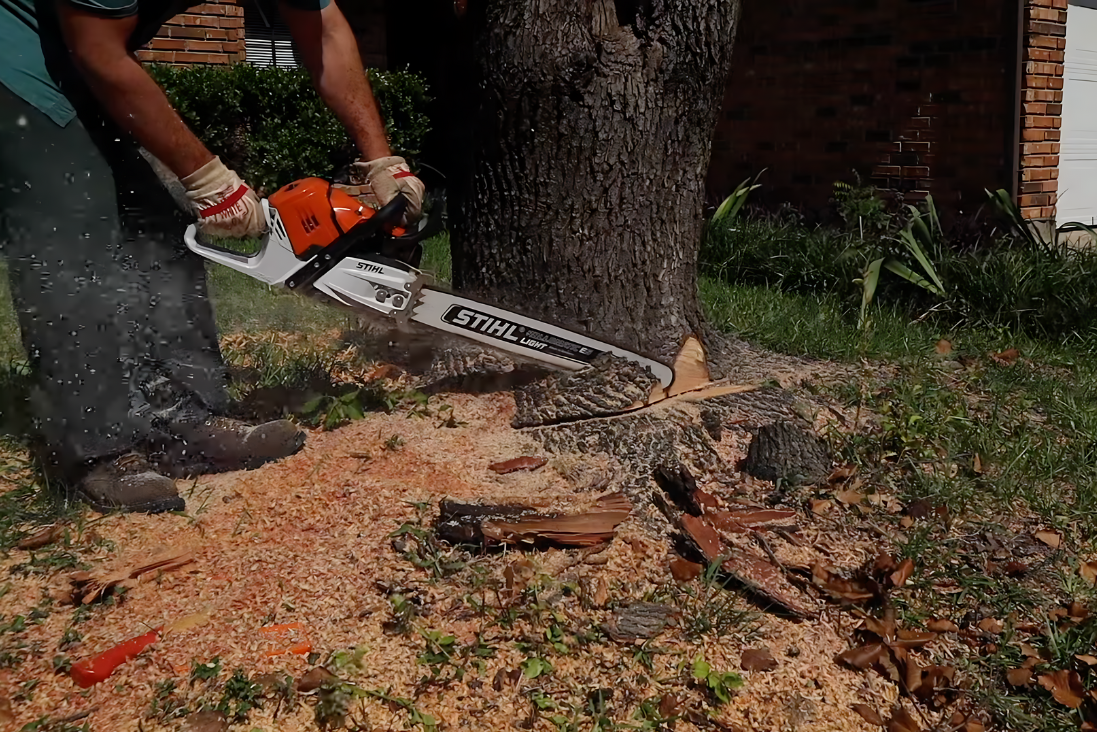Chainsaw Basics: How to Cut Wood Safely

When it comes to outdoor work, a chainsaw is one of those tools that demands respect. Whether you’re an experienced user or new to handling one, understanding the basics of how to operate a chainsaw safely is crucial. It’s not just about getting the job done—it’s about doing it right, with an eye on safety and efficiency. Let’s cover some essentials of chainsaw basics!
Related: 8 Ways To Cut Rebar Safely
Understanding Chainsaw Components
Before you even think about starting up a chainsaw, it’s important to get to know the tool itself. Every part of the chainsaw plays a role in its operation, and understanding these components is the first step in mastering chainsaw basics.
At the heart of any chainsaw is the engine, which powers the chain that does the cutting. The engine is typically gasoline-powered, though electric models are available as well. The bar is the long, flat piece of metal that the chain runs around. The length of the bar determines the maximum size of the wood you can cut. The chain, with its sharp cutting teeth, loops around the bar and is what actually cuts through the wood.
Another critical component is the chain brake, a safety feature that stops the chain from moving if it kicks back toward the operator. This is crucial because kickback—when the saw jerks backward toward you—is one of the most common causes of chainsaw injuries. The throttle trigger controls the engine speed, while the choke and primer help start the saw when it’s cold. The chain tensioner allows you to adjust the tension of the chain, which is essential for smooth operation and to prevent the chain from coming off the bar.
Gear and Safety Measures

Before you even start the engine, you need to be properly equipped. Chainsaws are no joke, and safety gear is a must. Chainsaw chaps, which protect your legs from accidental contact with the moving chain, are essential. They might feel cumbersome at first, especially in hot weather, but they’re worth it. Trust me, you don’t want to find out the hard way how much damage a chainsaw can do.
In addition to chaps, you’ll need a good pair of gloves, preferably leather, to protect your hands. Steel-toe boots are recommended to safeguard your feet, and eye protection is crucial to keep flying debris out of your eyes. Hearing protection is also important, as chainsaws are loud and can cause hearing damage over time. If you’re felling trees or working in a situation where there’s a risk of falling branches, a hard hat is a good idea as well.
Once you’re geared up, it’s time to check your chainsaw. Make sure the chain is sharp and properly tensioned. A loose chain can come off the bar, while a dull chain can cause the saw to bind in the wood, increasing the risk of kickback. Check that the bar oil reservoir is full; bar oil is what keeps the chain lubricated and running smoothly.
The Right Way to Operate Your Chainsaw

Place the chainsaw on the ground with the chain brake engaged. This will prevent the chain from moving as the saw starts up. With your foot in the rear handle, pull the starter cord firmly. Once the engine catches, adjust the choke and let the saw warm up before disengaging the chain brake.
When you’re ready to make your first cut, position the saw with the bottom part of the bar close to the engine against the wood. This area gives you the most control and minimizes the risk of kickback. As you cut, let the saw do the work; there’s no need to force it. Applying too much pressure can cause the chain to slow down, leading to inefficient cutting and increased wear on the saw.
If you need to make a cut with the tip of the bar, be extra cautious. This is the area most likely to cause kickback. If you’re not experienced with using this part of the saw, practice on smaller pieces of wood first to get a feel for how the saw reacts.
Like any tool, a chainsaw requires regular maintenance to keep it running smoothly. After each use, clean the saw to remove sawdust and debris from the chain and bar. Check the chain for any signs of damage or excessive wear, and sharpen it regularly to ensure clean cuts.
It’s also important to check the chain tension before each use. A chain that’s too loose can come off the bar, while one that’s too tight can put unnecessary strain on the engine. Also keep an eye on the bar oil reservoir to keep the chain properly lubricated. But if you’re not going to use the saw for a while, drain the fuel and bar oil so it doesn’t gum up the carburetor.
How to Cut Wood Safely

When it comes to cutting wood with a chainsaw, technique is everything. Whether you’re felling a tree, bucking logs, or trimming branches, there are specific techniques that will make the job easier and safer.
For felling trees, start by assessing the tree and its surroundings. Make sure there are no obstacles in the direction you want the tree to fall, and plan an escape route for yourself in case something goes wrong. Begin by making a notch cut on the side of the tree facing the direction you want it to fall. This cut should be about one-third of the way through the tree. Then, make a back cut on the opposite side, slightly above the bottom of the notch cut. This will allow the tree to fall in a controlled manner.
When bucking logs (cutting them into smaller pieces), use the same technique of cutting with the lower part of the bar close to the engine for maximum control. If the log is on the ground, be mindful of where your chain will go when it finishes the cut. You don’t want to hit the dirt or rocks, as this will quickly dull the chain.
For trimming branches, work from the base of the branch outward, and always be aware of where the branch will fall. Never cut directly overhead, as this increases the risk of injury from falling branches.